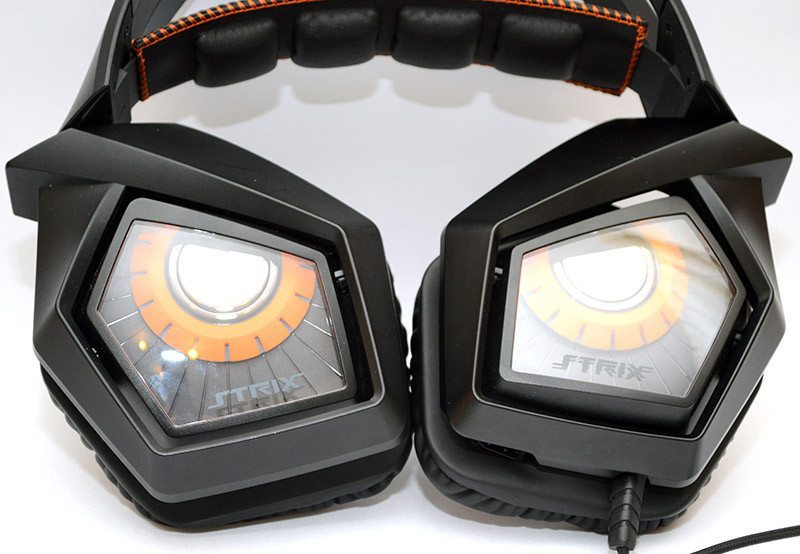ASUS Strix 2.0 Multi-Platform Gaming Headset Review
Peter Donnell / 9 years ago
A Closer Look
The headset comes hard-wired with a braided cable and a 4-pole 3.5mm jack, meaning it’s plug and play ready for mobile devices and PlayStation 4; you’ll need to use the adaptor cables to split it to dual 3.5mm jacks for use on PC.
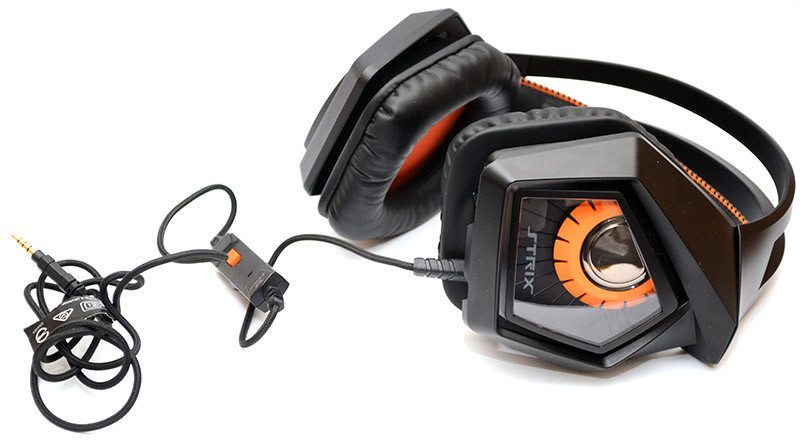
There’s an in-line controller on the wire, but it’s strange quite high up the cable, meaning it hangs about shoulder height. This means that it’s near impossible to see it to check the controls, but since there is only a volume wheel and a microphone mute slider, that’s fortunately not an issue. There’s also a built-in microphone here, which is handy and no doubt explains why the control is mounted so high.

On the base of the ear cups, you can see where the wire connects to the headset, as well as a proprietary jack that allows you to fit the microphone boom. There’s also a few small holes on the base of each driver, helping give them a semi-open back design.
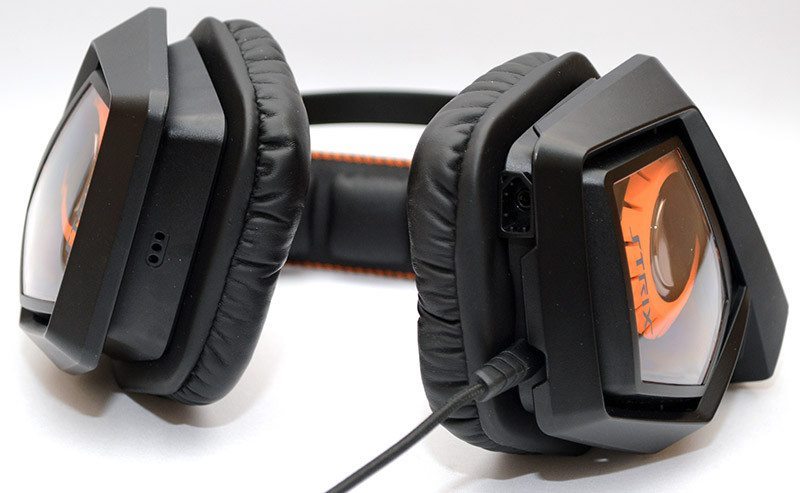
The STRIX branding is quite clear here, with the owl eyes design built around the back of those massive drivers which are delightfully on show through the perspex backing. This is seriously cool, and certainly unique compared to most other headsets.
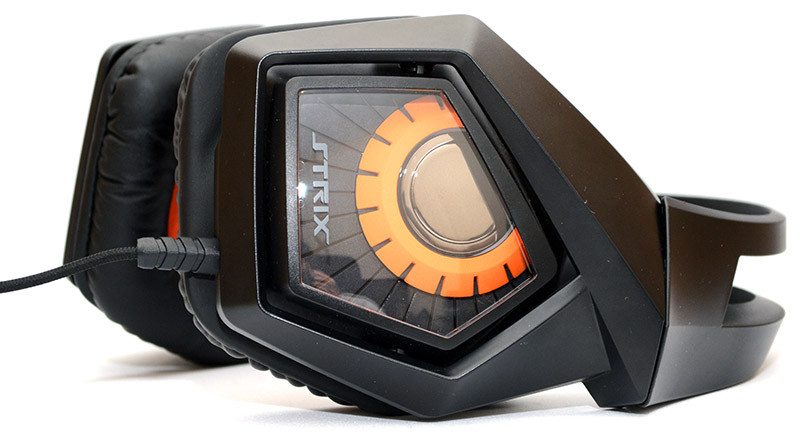
The headband is nice and durable giving a rather large frame to those massive ear cups. What is surprising, however, is that despite the big design, this headset is remarkably lightweight.
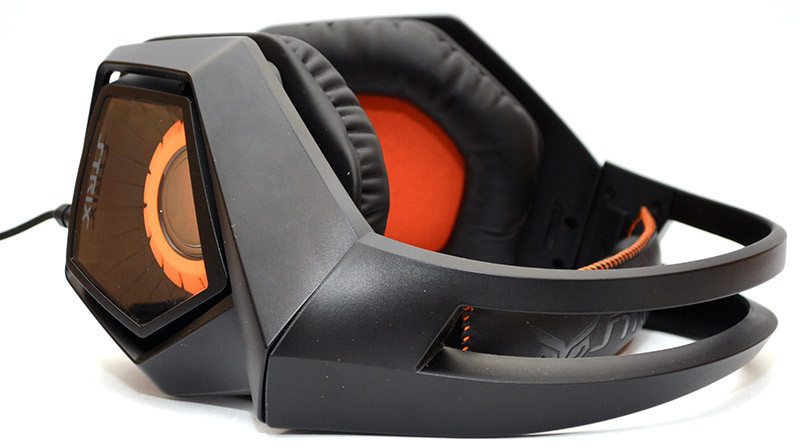
The outer headband has a fixed size, designed to stay above the top of your head and hold the ear cups firmly in place.
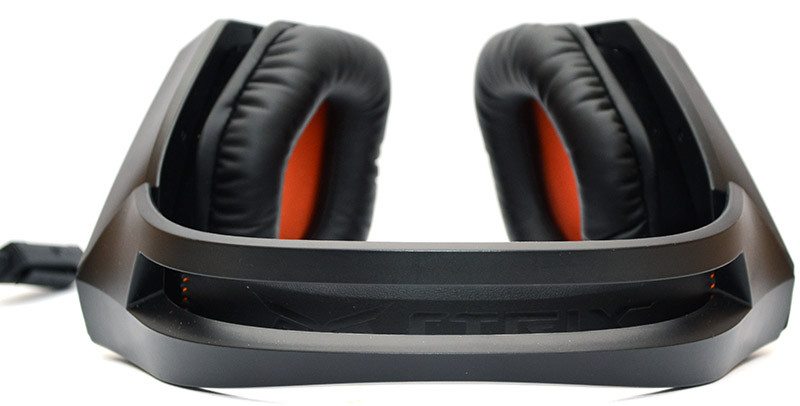
The interior is a soft padded and sprung headrest that auto adjusts to fit when worn; it’s very comfortable to wear and needs no adjusting between different users. The lightweight design of the headset is a welcome surprise though and it’s easy enough to forget that you’re wearing it after a while, even if the drivers do feel like you’re wearing a Princess Leia hairpiece at first due to their large size.
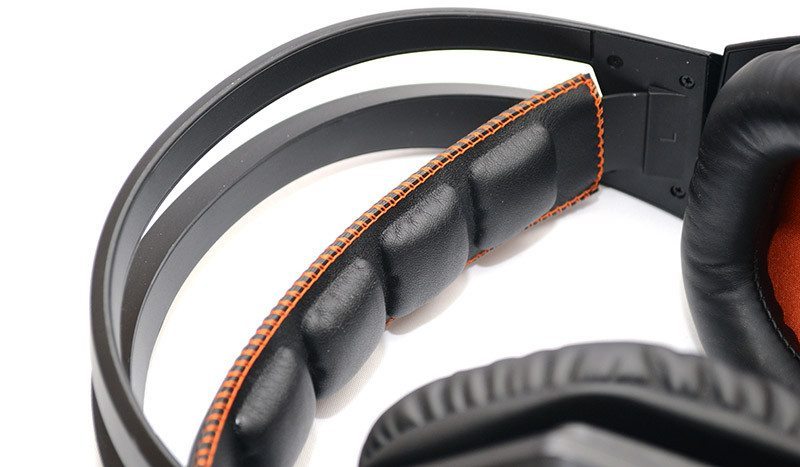
Each ear cup is mounted on a pivot too, which means they’ll auto adjust to suit your head shape, giving you a nice clean fit over your ears.
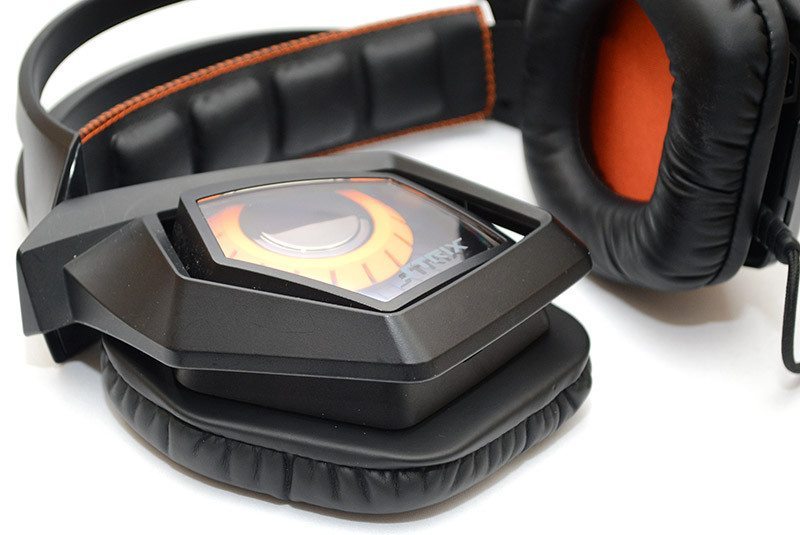
The soft leather backing is nice and comfortable to wear, but also does a great job of blocking a lot of external noise. The 60mm drivers are massive, but this means that there’s a lot of room for your ear between the padding, giving you a very comfortable over-the-ear fitting. The close fit does a great job of tightening up the bass response and there is certainly plenty of bass here. The drivers are loud and powerful to give a really big soundscape while gaming, but there’s a noticeably boosted EQ at play here. When listening to music, the sound is far from accurate and there’s quite a boost on the treble. There’s a lot of detail to the mid ranges, and the bass is rich and distortion free, but listening to heavy rock music left me a little unimpressed; movies were equally uninspiring with this headset.
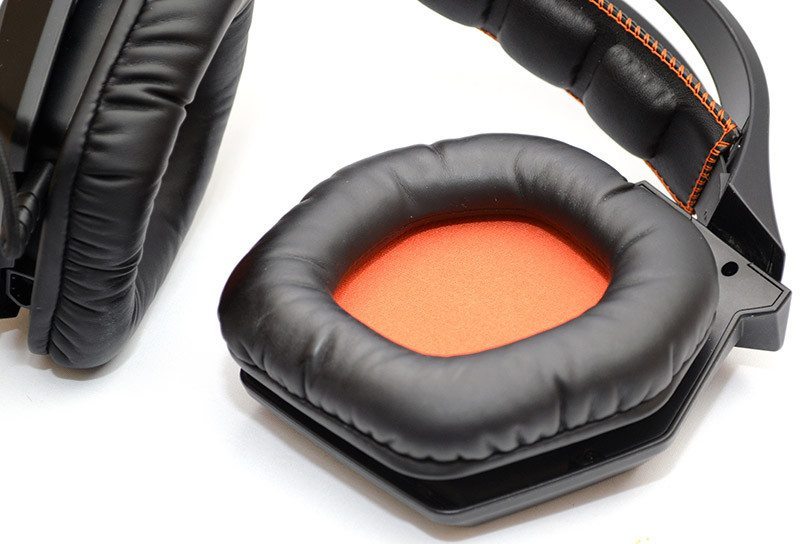
The microphone attached easily enough, just plug it in and you’re ready to rock. The in-line microphone on its own works rather well, perfect for making a few phone calls, chatting on Skype and gaming. If you want much better microphone performance, however, the boom microphone does work really well, but I often prefer the built-in one simply for the convenience that it offers. Which one best suits your needs and usage is really down to you, but it’s nice to have a choice.
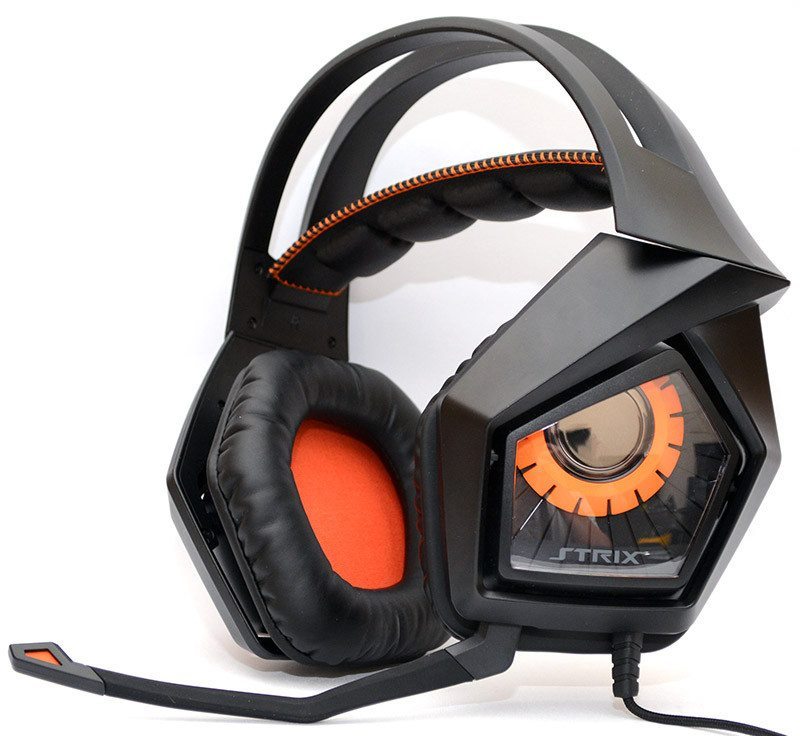
The drivers are certainly powerful, capable of putting out some often impressive and punchy audio while gaming, but switch from games to any other media and it all falls apart. Playing a few hours of Battlefront on this headset was nothing short of amazing, the sheer scale of the sound is something to behold and it does give the impression of a wide open battlefield. The enemy footsteps ring through nice and clear, explosions are detailed in sound, but not overpowering in the mix and gun fine sounds great. Whatever ASUS did to the drivers, it works, so long as you’re gaming.
